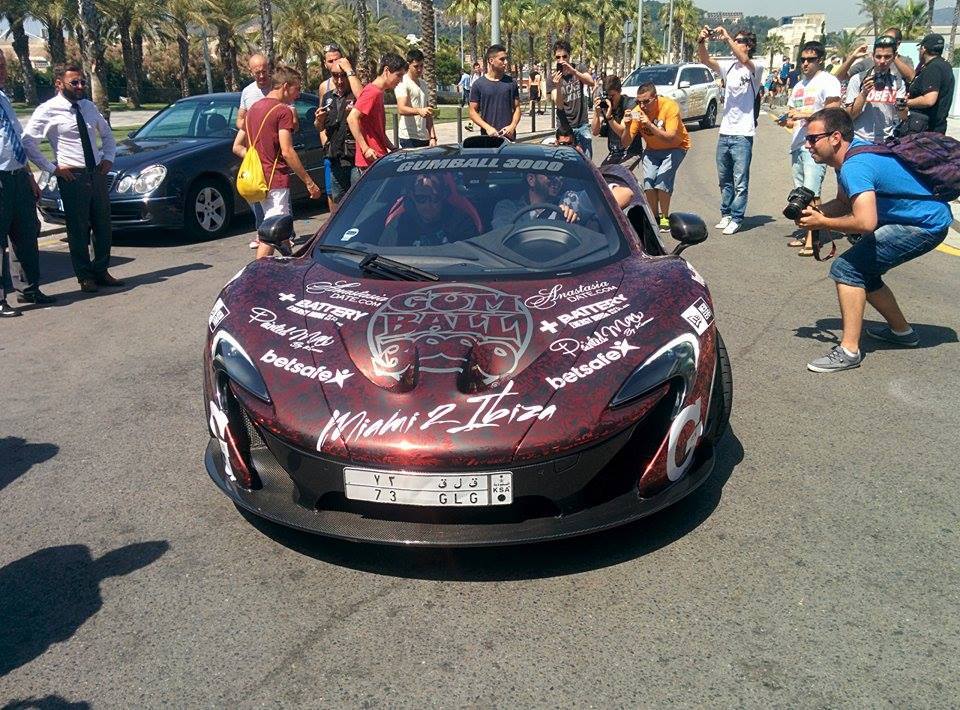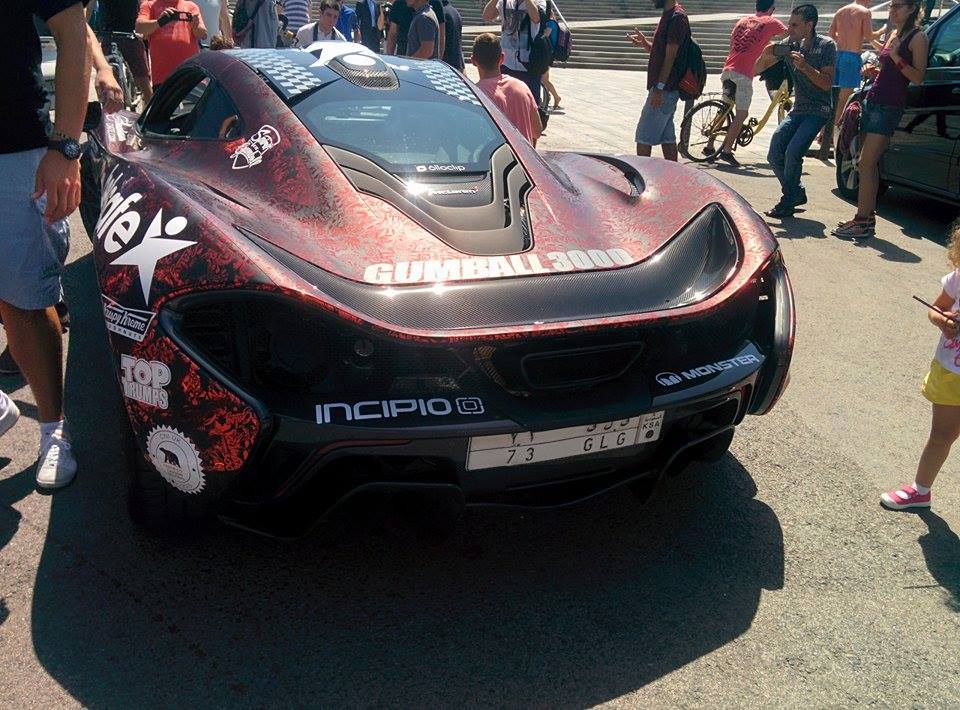McLaren P1: 2014 Gumball Rally in Barcelona (Spain)
The McLaren P1 is a sports car produced by British marque McLaren Automotive. It is a plug-in hybrid with a mid-engine layout. It was first shown at the 2012 Paris Motor Show, with sales of the P1 beginning in the United Kingdom in October 2013 and all of the limited run of 375 units sold by November 2013. Production ended in early December 2015. The United States accounted for 34% of the units and Europe for 26%.
It is considered by the automotive press to be the successor to the McLaren F1, utilising hybrid power and Formula One technology, but does not have the same three-seat layout. It was later confirmed that the Speedtail served as the actual successor to the McLaren F1. The P1 has a mid-engine, rear wheel drive design that used a carbon fibre monocoque and roof structure safety cage concept called MonoCage, which is a development of the MonoCell first used in the MP4-12C and then in subsequent models. Its main competitors are the LaFerrari and the 918 Spyder. They are all similar in specifications and performance, and in a race around Silverstone circuit they were all within half a second of each other, the P1 finishing first at 58.24 seconds and the LaFerrari finishing last at 58.58 seconds; the 918 was in-between with 58.46 seconds.
Parts of the car were inspired by a sailfish that Frank Stephenson saw when on holiday in Miami.
58 units of the track-oriented P1 GTR and 5 units of its road legal counterpart, the P1 LM were produced after the initial run of 375 cars.
13 experimental prototypes ‘XP’, 5 validation prototypes ‘VP’, and 3 pre-production ‘PP’ cars were produced by McLaren before the production of the P1 started. A number of these 21 test cars have been refurbished, modified and sold to customers.
The P1 features a 3.8 L; 231.8 cu in (3,799 cc) twin-turbocharged V8 engine. The twin turbos boost the petrol engine at 1.4 bar (20.3 psi) to deliver 542 kW (737 PS; 727 hp) at 7,500 rpm and 531 lb⋅ft (720 N⋅m) of torque at 4,000 rpm, combined with an in-house-developed electric motor producing 132 kW (179 PS; 177 hp) and 192 lb⋅ft (260 N⋅m) of torque.
The electric motor and the petrol engine in the P1, produce a combined power output of 674 kW (916 PS; 903 hp) and 900 N⋅m (664 lb⋅ft) of torque. The electric motor can be deployed manually by the driver or left in automatic mode, whereby the car’s ECUs ‘torque fill’ the gaps in the petrol engine’s output, which is considered turbo lag. This gives the powertrain an effective powerband of almost 7,000 rpm. The car has rear-wheel-drive layout and is equipped with a 7-speed dual-clutch transmission developed by Graziano Trasmissioni.













